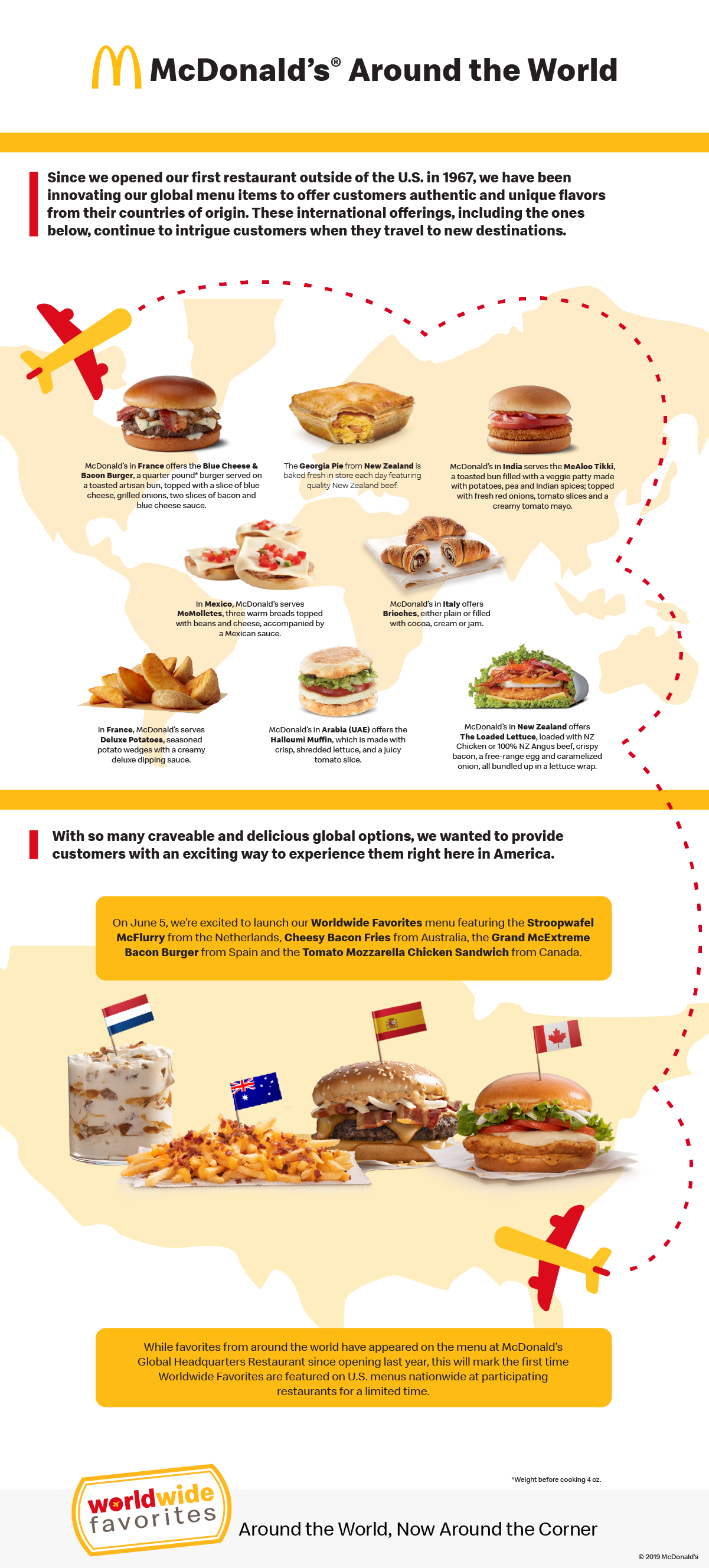The Cultural Marketer | How McDonald's Achieves Brand Success Through Cultural Adaptability
McDonald's Corporation is one of the most successful global restaurant chains around the world, founded by Richard and Maurice McDonald in California. As of 2019, it operated and franchised a total of 38,695 restaurants in 118 countries and territories, serving over 69 million customers worldwide (Statista, 2019). Its global success can be attributed to a myriad of reasons with one, in particular, being its ability to innovate and adapt across different regions and cultures.
McDonald’s strategic aim to support cultural diversity and adjust their offerings to local markets underscores its effective geographic segmentation which in return allows them to obtain a wider reach than its competitors. In this blog post, we will be illustrating through the use of examples how McDonald’s adapts their products as well as their marketing campaigns across different cultures in the world.
Japan
Consumer attitude in Japan is vastly different than that in the U.S. Initially, McDonald’s in Japan retained the menu for the U.S. market. However, it gradually rolled out new menu items such as the Rice Burger, Seaweed Shaker, Teriyaki Burger, Ebi (shrimp) burger, green tea milkshakes and ice cream to cater to Japanese preferences. Even the product sizes are different in Japan than in the Americas. For instance, a large drink container at a McDonald’s in Japan is significantly smaller than that in the U.S.
Unique menu items at Japan’s McDonald’s outlets. (Source: McDonald’s)
China
The rapid urbanization of China has raised concerns about the environment and public health safety due to the country’s water scarcity and pollution problems. As a result of this, citizens are heavily concerned with the sanitation of the food at McDonald’s. To change their perceptions, the company pushed out advertising campaigns that primarily focused on displaying fresh, clean ingredients to the mass public.
India
As the majority of the Indian population are Hindus, people consider cows as sacred animals. Taking this into account, McDonald’s customized its menu to cater to the locals’ tastes and preferences by replacing beef with chicken. As a result, they introduced the Maharaja Mac which is the local version of the standard Big Mac. McDonald’s also tried to appeal to vegetarians in India by offering vegetarian-friendly options such as the Masala Grilled Veggie Burger, McAllo Tikki and McVeggie. In 2013, the company even opened its first vegetarian restaurant to cater to this demographic.
Indonesia
Many Indonesians are Muslims and McDonald’s adapts to the dietary needs of this particular demographic by replacing pork with fish and ensures their outlets are strictly halal. In addition, because Indonesians prefer rice over bread, McDonald’s has also incorporated rice into their meal together with some spicy alternatives that locals prefer.
Some examples of McDonald’s global menu items. (Source: McDonalds)
Switzerland
Drawing inspiration from what Swiss people like to eat, McDonald’s introduced the McRaclette burger which is the modern take on the traditional Swiss dish which is a wheel of cheese served heated to spread on food. The burger contains Swiss beef, three Emmi raclette cheese slices, onion, gherkin pickles and a unique raclette sauce. It has already become a favourite among Swiss customers.
Germany
Meat is a huge component of Germans’ daily diet. Hence, McDonald’s introduced a creative burger called the Triple Bratwurst Sandwich that combines Nürnberger sausages with beef. Customers can also find beer options at McDonald’s outlets in Germany as Germans are known to love beer.
France
In 2010, McDonald’s released a campaign called “Venez Comme Vous Etes” (translation: “Come As You Are”) to show support towards the LGBTQ community in France, a country that had been especially accepting and tolerant toward LGBTQ people. This is a great example of how McDonald’s humanized their brand by being inclusive and supporting France’s movement towards liberating the LGBT community.
Venez Comme Vous Etes Campaign rolled out by McDonald’s in 2010 to show support for the LGBTQ community in France. (Source: McDonald’s)
What we have illustrated in this blog post is the importance for businesses with the intention to expand to foreign markets to bear in mind the nuances and sensitivites of a region’s culture which includes their customs, preferences, religious beliefs, habits, values and attitudes. As with the case of McDonald's, we can see that by keeping on top of cultural trends and adapting their product offerings and advertising strategies to work cohesively with these trends, they were able to generate tremendous sales worldwide while delivering a customer-centric experience and staying true to their brand values.
Make sure to subscribe to our social media channels including YouTube and podcast as we continue to share interesting marketing insights around the world in our Cultural Marketer series. Stayed tuned!




